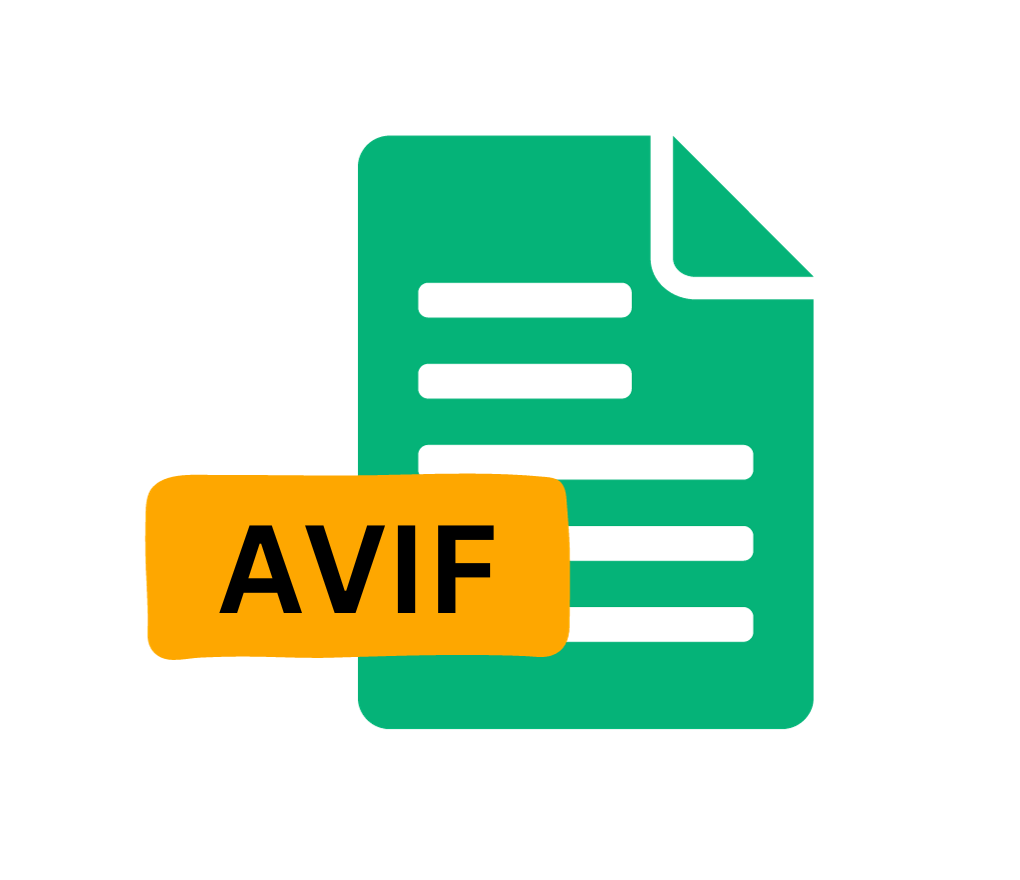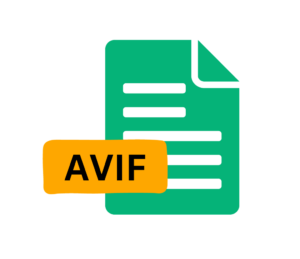What is AVIF?
AVIF stands for AV1 Image File Format and is used for storing images and video. It uses the same container format as HEIC images but with potentially better compression. It offers lossy and lossless compression. It offers an alternative to HEIC and JPEG image file formats but is not as well supported in web browsers.
It is an open standard with no patents.
The file name extension for this format is: .avif
Here are some other questions about AVIF you might also want to ask. If you have any other questions, please feel free to contact us.
What is it used for?
The format has many different use cases. It is an optimal choice for web developers using the format for still images, as it provides rich and vibrant images with a smaller size leading to stable performance and a better user experience which is why Web developers use AVIF to deliver fast-loading, visually rich websites.
The format is especially appealing for high-resolution photography, web graphics, icons, and animations due to its superior compression. Tests have shown AVIF files can be 50% smaller than JPEGs at similar quality, and even outperform WebP in many cases.
Differences compared to HEIC
While both use the Heif container, AVIF also uses the AV1 compression format. AVIF often delivers better quality at lower file sizes and is an open standard with no patent concerns, making it more appealing for universal and commercial use.
Is it better than JPEG?
It may produce better compression than JPEG but JPEG is better supported by web browsers and general software. It is possible to convert AVIF to JPG using third-party software like JDeli.
Limitations and Browser Support
While AVIF is gaining significant popularity, particularly for web use, not all browsers and devices support it yet. Chrome, Firefox, and Safari (as of 2024/2025) include AVIF decoding, but some older browsers and operating systems may require fallback formats like JPEG or PNG.
Software support for editing and conversion is growing but still lags behind legacy image standards.
Is it possible to convert AVIF to PNG?
Yes. The reason many people do this is because PNG is a much better supported Image file format. To convert AVIF to PNG you will need to use a third-party software library.
How to open AVIF files in Java?
ImageIO (the built-in Java Image library) does not support AVIF images by default. JDeli lets you read and write Avif images or add AVIF support to ImageIO.
FAQs
Q: Does AVIF support transparency and animation?
A: Yes, AVIF supports full alpha transparency and can encode animation sequences, similar to GIF or animated WebP.
Q: Why isn’t AVIF as widely supported as JPEG?
A: JPEG is deeply entrenched and universally supported after more than 25 years of use. AVIF is still relatively new, and while support is growing rapidly, some browsers, operating systems, and applications do not yet support it by default.
Q: How can I view or edit AVIF images?
A: Most modern browsers and a growing number of image editors (including Photoshop and GIMP with plugins) support AVIF. Alternatively, online converters and specialized apps allow for easy viewing and conversion.
Are you a Java Developer working with Image files?
// Read an image
BufferedImage bufferedImage = JDeli.read(avifImageFile);
// Write an image
JDeli.write(bufferedImage, "avif", outputStreamOrFile);// Read an image
BufferedImage bufferedImage = JDeli.read(dicomImageFile);// Read an image
BufferedImage bufferedImage = JDeli.read(heicImageFile);
// Write an image
JDeli.write(bufferedImage, "heic", outputStreamOrFile);// Read an image
BufferedImage bufferedImage = JDeli.read(jpegImageFile);
// Write an image
JDeli.write(bufferedImage, "jpeg", outputStreamOrFile);
// Read an image
BufferedImage bufferedImage = JDeli.read(jpeg2000ImageFile);
// Write an image
JDeli.write(bufferedImage, "jpx", outputStreamOrFile);
// Write an image
JDeli.write(bufferedImage, "pdf", outputStreamOrFile);
// Read an image
BufferedImage bufferedImage = JDeli.read(pngImageFile);
// Write an image
JDeli.write(bufferedImage, "png", outputStreamOrFile);
// Read an image
BufferedImage bufferedImage = JDeli.read(tiffImageFile);
// Write an image
JDeli.write(bufferedImage, "tiff", outputStreamOrFile);
// Read an image
BufferedImage bufferedImage = JDeli.read(webpImageFile);
// Write an image
JDeli.write(bufferedImage, "webp", outputStreamOrFile);
What is JDeli?
JDeli is a commercial Java Image library that is used to read, write, convert, manipulate and process many different image formats.
Why use JDeli?
To handle many well known formats such as JPEG, PNG, TIFF as well as newer formats like AVIF, HEIC and JPEG XL in java with no calls to any external system or third party library.
What licenses are available?
We have 3 licenses available:
Server for on premises and cloud servers, Distribution for use in a named end user applications, and Custom for more demanding requirements.
How does JDeli compare?
We work hard to make sure JDeli performance is better than or similar to other java image libraries. Check out our benchmarks to see just how well JDeli performs.

